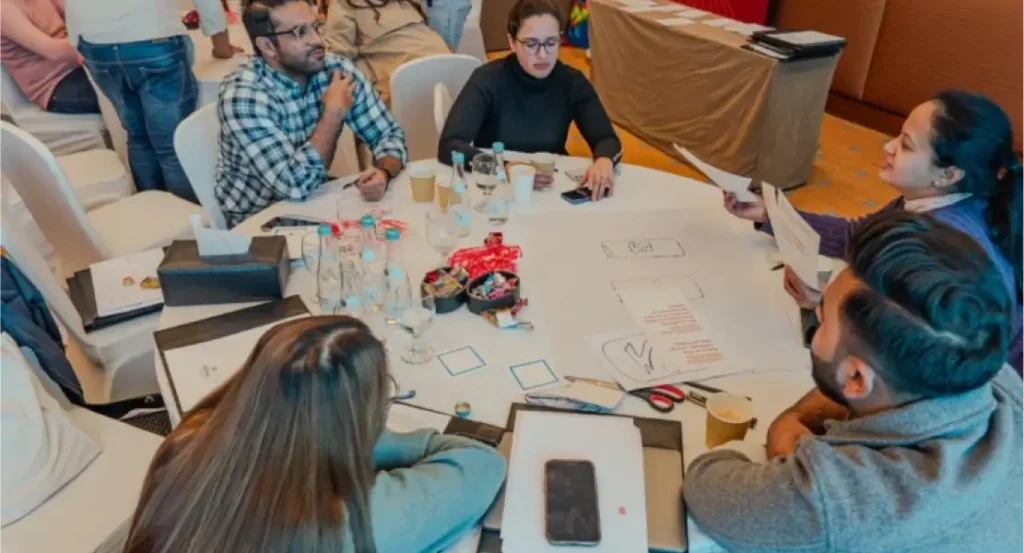Mastering Multicultural Leadership: Strategies for Positive Impact in Global Teams

Introduction: The Importance of Multicultural Leadership
As businesses expand globally, the ability to lead multicultural teams has become a critical skill for leaders. In an increasingly interconnected world, leaders must navigate diverse cultural norms, communication styles, and work habits to foster collaboration and drive success. Mastering multicultural leadership is not only about managing differences—it’s about leveraging these differences to create stronger, more innovative teams. By understanding and implementing effective strategies, leaders can have a positive impact on their global teams and enhance overall performance.
Understanding Cultural Differences: The Foundation of Multicultural Leadership
The first step to mastering multicultural leadership is developing a deep understanding of cultural differences. Every culture has unique values, beliefs, and ways of working that influence team dynamics. Leaders who are aware of these cultural nuances can better anticipate and manage potential conflicts, misunderstandings, or barriers to communication.
One helpful model for understanding cultural differences is Geert Hofstede’s cultural dimensions theory, which identifies six key dimensions: power distance, individualism vs. collectivism, uncertainty avoidance, masculinity vs. femininity, long-term orientation, and indulgence vs. restraint. Leaders who familiarize themselves with these dimensions can gain insights into how different cultures approach authority, teamwork, risk, and work-life balance.
By understanding the cultural backgrounds of their team members, leaders can tailor their communication and leadership styles to suit the needs of their global workforce. This fosters an environment of respect and inclusivity, which is crucial for maintaining team cohesion.
Building Trust Across Cultures
Trust is the foundation of any successful team, but building trust in a multicultural context requires extra effort. Different cultures have varying expectations when it comes to building relationships. In some cultures, trust is built through personal connections and face-to-face interactions, while in others, trust is established through competence and demonstrated results.
Leaders can build trust in multicultural teams by being transparent, consistent, and open to feedback. Regularly check in with team members to ensure they feel valued and heard. Encourage open communication and create a safe space where team members can share their thoughts and concerns without fear of judgment.
Additionally, leaders should be mindful of how they approach conflict resolution, as cultural norms around conflict can vary. While some cultures may prefer direct confrontation, others may favor a more diplomatic approach. Leaders who adapt their conflict resolution strategies to suit the cultural preferences of their team members will build trust and ensure smoother team interactions.
Effective Communication in Multicultural Teams
Communication is often the biggest challenge in multicultural teams, where language barriers, different communication styles, and varying expectations can lead to misunderstandings. Clear and effective communication is key to leading a global team successfully.
To enhance communication in multicultural teams, leaders should:
- Prioritize Clarity: Use simple, straightforward language, especially when communicating with non-native speakers. Avoid idioms, slang, or jargon that may not translate well across cultures.
- Encourage Active Listening: Foster a culture of active listening where team members pay close attention to what is being said before responding. This helps prevent misunderstandings and ensures that everyone feels heard.
- Leverage Technology: Use tools like video conferencing, instant messaging, and project management software to bridge communication gaps. These tools can help keep everyone on the same page, regardless of time zones or language differences.
- Adapt Communication Styles: Different cultures have different preferences when it comes to communication. Some may value direct, to-the-point exchanges, while others may prefer more nuanced and indirect communication. Leaders should adapt their style to fit the cultural context, ensuring that all team members feel comfortable and included in discussions.
Fostering Inclusion and Collaboration
In a multicultural team, fostering an inclusive environment is essential for promoting collaboration and innovation. Leaders must ensure that all team members feel valued and that their unique perspectives are respected. This starts with creating an atmosphere of psychological safety, where individuals feel comfortable sharing their ideas without fear of criticism or exclusion.
One strategy for fostering inclusion is to celebrate cultural diversity within the team. Encourage team members to share their cultural traditions, holidays, and values. This can help break down cultural barriers and build stronger connections between team members.
Additionally, leaders should encourage collaboration by assigning diverse team members to work together on projects. When individuals from different backgrounds collaborate, they bring fresh ideas and perspectives that can lead to more creative solutions. As a leader, it’s important to recognize and reward collaborative efforts, reinforcing the value of teamwork and diversity.
Adapting Leadership Styles for Global Teams
Leading a multicultural team requires flexibility and the ability to adapt leadership styles to different cultural contexts. What works for one culture may not be effective for another. For example, in high power distance cultures, such as many Asian countries, leaders are expected to take a more authoritative approach. In contrast, low power distance cultures, such as Scandinavian countries, often prefer a more democratic, participatory leadership style.
To be an effective multicultural leader, it’s important to be culturally agile—able to shift between different leadership styles depending on the needs of the team. Leaders should also engage in continuous learning about the cultures they are working with, seeking to understand how cultural factors influence leadership expectations.
By adapting their leadership style to meet the needs of their diverse team, leaders can create a more harmonious and productive work environment, where all team members feel respected and motivated.
Conclusion: The Path to Positive Impact in Global Teams
Mastering multicultural leadership is about more than just managing diversity—it’s about embracing it and leveraging it for the benefit of the team and the organization. By understanding cultural differences, building trust, communicating effectively, fostering inclusion, and adapting leadership styles, leaders can have a positive impact on their global teams.
In a world where businesses are increasingly global, the ability to lead across cultures is a competitive advantage. Leaders who invest in developing their multicultural leadership skills will not only enhance team performance but also create a more inclusive, innovative, and successful organization.